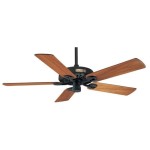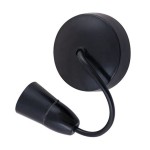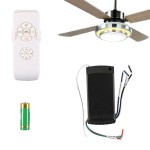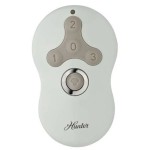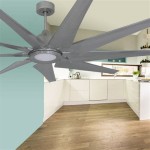Essential Aspects of Choosing the Best Ceiling Fans for Small Rooms
When it comes to maintaining a comfortable indoor climate in small rooms, ceiling fans play a crucial role. With their ability to circulate air effectively, ceiling fans can help distribute warmth during winter months and create a refreshing breeze during hot summer days, all while enhancing the overall aesthetics of the space.
However, choosing the right ceiling fan for a small room requires careful consideration of several key factors to ensure optimal performance and suitability for the specific space. Here are some essential aspects to keep in mind:
Fan Size and Speed
For small rooms, it is important to select a ceiling fan that is appropriately sized. The general rule of thumb is to choose a fan with blades that extend approximately one-half to two-thirds of the distance from the wall to the opposite wall or ceiling. This allows for adequate airflow without overwhelming the space.
In addition to the size, consider the fan's speed. For small rooms, a fan with multiple speed settings is recommended, including low, medium, and high speeds. This versatility allows for customization of the airflow intensity to suit different needs and preferences.
Blade Design and Shape
The design and shape of the fan blades can impact the airflow pattern and efficiency. For small rooms, fans with aerodynamically designed blades, such as propeller-shaped or swept-wing blades, are preferred as they provide better airflow circulation and less noise.
Furthermore, consider the number of blades on the fan. While more blades generally result in greater airflow, it is important to find a balance that does not make the fan appear too bulky in a small room. Three or four blades are often a good choice for small spaces.
Mounting Height and Location
The mounting height and location of the ceiling fan are critical for ensuring effective air circulation. The fan should be mounted at a height of about 8 to 10 feet from the floor, providing ample clearance for the blades to rotate freely.
In terms of location, the fan should be positioned in the center of the room or slightly towards the center. This allows for even distribution of airflow throughout the space, eliminating dead spots where air does not circulate.
Lighting and Style
Many ceiling fans come with integrated lighting fixtures, which can be a convenient way to provide additional illumination in the room. When choosing a fan with a light kit, consider the type of bulbs used, their wattage, and the desired level of brightness.
Lastly, the style of the ceiling fan should complement the overall design of the room. There are various styles available, from classic to modern, and choosing a fan that blends with the existing decor can enhance the visual appeal of the space.
By carefully considering these key factors, you can select the best ceiling fan for your small room, ensuring optimal airflow, comfort, and style.

Small Room Ceiling Fans Best For Rooms Hunter Fan

Small Room Ceiling Fans Best For Rooms Hunter Fan

Best Small Room Fans For Bedrooms Bathrooms Kitchens More Delmarfans Com

Best Ceiling Fans For Small Rooms Lumera Living

How To For A Ceiling Fan Reviews By Wirecutter

Best Ceiling Fans 2024 The Strategist

Best Ceiling Fans 13 Options For Any Style Or Budget Time Stamped

11 Best Modern Ceiling Fans For 2024 Apartment Therapy

Bell Howell 15 7 In Indoor White Ceiling Fan With Remote Led Light Socket 8563encbqh The Home Depot

16 Best Ceiling Fans For Extra Airflow In 2024
Related Posts

